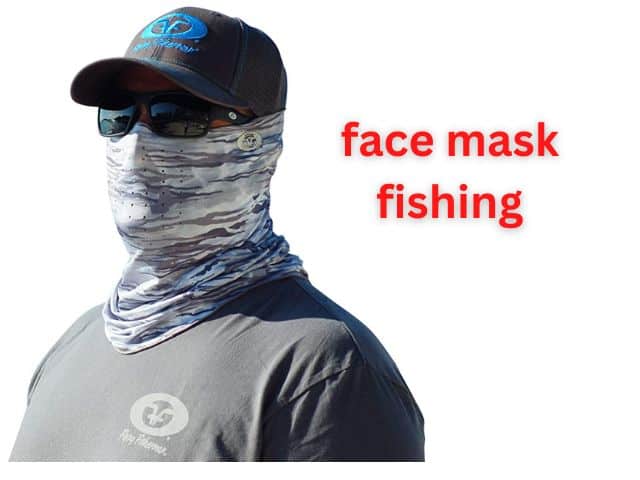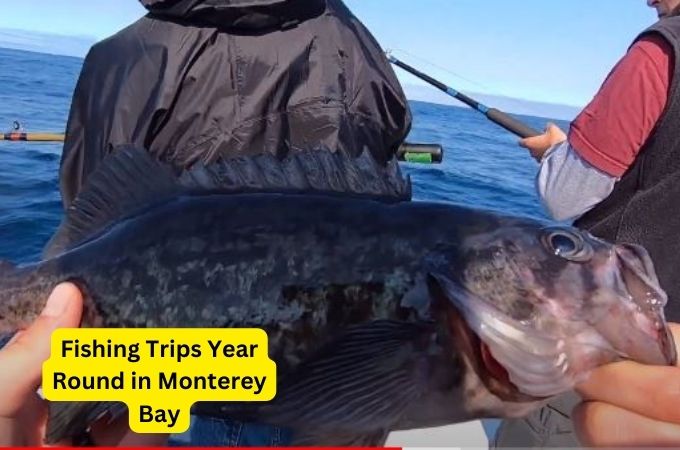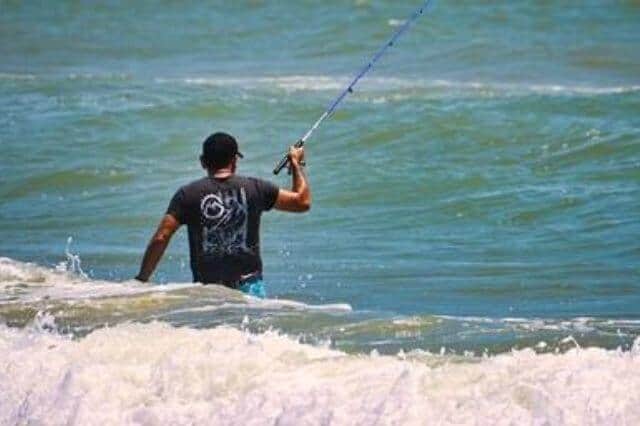The Ultimate Guide: Best Line For Your Baitcaster
Looking for the best line to put on a baitcaster? Well, look no further! We’ve got you covered with the perfect solution to enhance your fishing experience. Whether you’re a seasoned angler or just starting out, selecting the right line is crucial for maximizing your success on the water. We understand the importance of finding a line that offers optimal strength, sensitivity, and casting distance, and we’re here to guide you through the process. So, let’s dive right in and discover the best line to elevate your baitcaster to new heights!
Best Line to Put on a Baitcaster
Choosing the best line for your baitcaster can greatly impact your fishing experience. The right line can improve your casting distance, sensitivity, and overall success in catching fish.
However, with so many options available, it can be overwhelming to determine which line is the best fit for your baitcaster. In this article, we will explore the different types of lines, their characteristics, and factors to consider when selecting the best line to put on a baitcaster.
Understanding Baitcaster Lines
Before we delve into the best line options, it’s important to understand the different types of lines available for baitcasters. The three main categories are monofilament, fluorocarbon, and braided lines. Each has its own unique properties, advantages, and disadvantages.
1. Monofilament Lines
Monofilament lines are made from a single strand of nylon and are widely used by anglers. They offer excellent versatility and are suitable for various fishing techniques. Here are some key features of monofilament lines:
- Stretch: Monofilament lines have a higher stretch compared to other types of lines, which can be advantageous when fighting larger fish.
- Visibility: Depending on the color, monofilament lines can be highly visible, making it easier to detect subtle bites.
- Abrasion Resistance: Monofilament lines have decent resistance to abrasion, allowing them to withstand contact with rocks, structures, and other underwater hazards.
- Low Cost: Monofilament lines are generally more affordable compared to fluorocarbon and braided lines.
2. Fluorocarbon Lines
Fluorocarbon lines are made from a polymer compound that renders them invisible underwater. Here are some key features of fluorocarbon lines:
- Invisibility: The refractive index of fluorocarbon matches that of water, making the line nearly invisible to fish.
- Sensitivity: Fluorocarbon lines offer excellent sensitivity, allowing anglers to detect even the slightest nibble.
- Sink Rate: Compared to monofilament lines, fluorocarbon lines have a faster sink rate, which can be beneficial for specific fishing techniques.
- Abrasion Resistance: Fluorocarbon lines are generally more abrasion-resistant compared to monofilament lines, making them suitable for fishing in rougher conditions.
3. Braided Lines
Braided lines are made by weaving multiple strands of synthetic fibers to create a single, strong line. Here are some key features of braided lines:
- Strength: Braided lines offer exceptional strength-to-diameter ratio, allowing anglers to target larger and more powerful fish species.
- Sensitivity: Due to their low stretch, braided lines provide enhanced sensitivity, ensuring you feel even the slightest tug.
- Visibility: Braided lines are highly visible, which can be advantageous for tracking the movement of your bait or detecting line movements.
- High Abrasion Resistance: Braided lines are highly resistant to abrasion, making them suitable for fishing in heavy cover or around sharp objects.
Factors to Consider When Choosing a Line:
Now that we understand the different types of lines available, let’s explore some important factors to consider when selecting the best line to put on a baitcaster:
1. Fishing Technique
The type of fishing technique you’ll be using plays a crucial role in determining the best line for your baitcaster. Different techniques require specific line characteristics. Here are some examples:
- Finesse Techniques: When finesse fishing for bass or targeting smaller species, a low-diameter and highly sensitive fluorocarbon line can be ideal.
- Heavy Cover Fishing: If you’ll be fishing in heavy cover where abrasion resistance is crucial, a strong braided line might be the best choice.
- Trolling or Casting: For trolling or long-distance casting, a monofilament line with good knot strength and decent stretch can be a suitable option.
2. Targeted Species
The species you intend to catch influences your line selection. Different fish have different behaviors, feeding habits, and environments. Here’s how it affects line choice:
- Saltwater Fishing: In saltwater, where fish tend to be larger and more powerful, a strong braided line provides the necessary strength and durability.
- Trout Fishing: Trout have excellent vision, so using a low-visibility line like fluorocarbon can increase your chances of success.
- Crappie or Panfish Fishing: When targeting crappie or other panfish, a sensitive and low-diameter monofilament line can enhance your presentation and sensitivity.
3. Fishing Conditions
The fishing conditions, such as water clarity, cover, and weather, can impact your line choice. Here are a few considerations:
- Clear Water: In clear water, where fish are easily spooked, a fluorocarbon line can provide the stealth needed for a successful presentation.
- Muddy Water: When fishing in muddy or stained water, a high-visibility, low-stretch braided line can help you detect strikes and control your bait.
- Structure or Cover: If you’ll be fishing around heavy structure or cover, opting for a braided line with excellent abrasion resistance is recommended.
- Weather Conditions: Windy conditions may require a heavier line to maintain control and minimize line bowing.
4. Budget
Lastly, your budget is an essential factor to consider. Fishing lines vary in price, and while some may be more expensive, they often offer improved performance and durability. Determine your budget and find the line that offers the best value within your price range.
Tips for Using Baitcaster Lines
Once you’ve selected the best line for your baitcaster, here are a few tips to ensure optimal performance:
- Proper Spooling: When spooling your baitcaster, ensure the line lays evenly across the spool to prevent line twists and tangles.
- Regular Inspection: Regularly inspect your line for signs of wear, fraying, or damage. Replace it if necessary to avoid breakage during crucial moments.
- Proper Line Weight: Match your line weight to the rod and reel specifications to maintain balance and prevent equipment damage.
- Knot Selection: Choose the appropriate knot for your line type to maximize knot strength and prevent slippage.
- Line Management: Practice effective line management techniques, such as thumb control and proper casting technique, to minimize backlashes and improve overall performance.
Choosing the best line for your baitcaster is critical for a successful fishing experience. Consider factors such as fishing technique, targeted species, fishing conditions, and budget when making your decision. Whether you opt for a monofilament, fluorocarbon, or braided line, each has its own advantages and applications. By understanding the characteristics and features of different lines, you can select the best line to put on your baitcaster and increase your chances of landing that trophy fish.
Faqs for Best Line For Your Baitcaster:
The best line to put on a baitcaster depends on various factors such as the type of fishing you’re doing, the target species, and your personal preference. However, fluorocarbon and braided lines are popular choices for baitcasters.
Fluorocarbon lines are nearly invisible underwater and have low stretch, making them ideal for crankbaits and techniques that require sensitivity.
Braided lines, on the other hand, offer superior strength and sensitivity, making them suitable for heavy cover fishing or when targeting larger fish.
Ultimately, it’s important to consider your fishing style and the conditions you’ll encounter to determine the best line for your bait caster.
Yes, monofilament line can be used on a baitcaster. Monofilament lines have good versatility and are commonly used by anglers, especially those who are just starting out. Monofilament lines have good knot strength, are cost-effective, and provide good control over the line.
However, they tend to have more stretch compared to fluorocarbon or braided lines, which may result in reduced sensitivity. Therefore, if you prefer a line with low stretch and enhanced sensitivity, fluorocarbon or braided lines might be better options for your bait caster.
The pound test rating for a baitcaster depends on the target species and the conditions you’ll be fishing in. For example, if you’re targeting smaller fish or fishing in lighter cover, a lower pound test rating (around 8-12 lb) may be sufficient.
However, if you’re targeting larger fish or fishing in heavy cover, it’s recommended to use a higher pound test rating (e.g. 14-20 lb or more).
Additionally, consider the type of line you’ll be using, as different materials have different breaking strengths.
Always refer to the recommended line weight indicated by the manufacturer of your bait caster for best results.
Fluorocarbon line offers several advantages when used on a baitcaster. It has a refractive index close to that of water, making it nearly invisible underwater.
This invisibility can increase your chances of getting a bite, especially in clear water conditions.
Fluorocarbon lines also have low stretch, which enables better sensitivity and enhanced hook-setting power. Additionally, fluorocarbon lines have good abrasion resistance, making them suitable for fishing in cover.
Overall, using fluorocarbon line on a baitcaster can improve your fishing success by providing stealth, sensitivity, and durability.
Braided line offers several benefits when used on a baitcaster. It has a high strength-to-diameter ratio, allowing you to use thinner lines with higher breaking strengths. This thinner diameter reduces the line’s visibility and resistance in the water, allowing for longer casts.
Braided lines also have minimal stretch, which enhances sensitivity and improves your ability to detect even the slightest nibble.
Furthermore, braided lines have excellent knot strength and are highly resistant to abrasion, making them suitable for fishing in heavy cover or around structures. Using a braided line on a bait caster can provide you with strength, sensitivity, and versatility.
Yes, you can use a combination of different lines on a bait caster. This technique, known as line splicing, involves using a backing line, typically a braided line, and attaching a leader line of another material, such as fluorocarbon or monofilament, to the main line.
This allows you to take advantage of the benefits each line offers. For example, you can use the low stretch and strength of the braided line as backing, with the invisibility and sensitivity of fluorocarbon or the versatility of monofilament as the leader line. Line splicing can provide you with a versatile setup that suits various fishing conditions and target species.
Final Thoughts
When it comes to selecting the best line for your baitcaster, there are several factors to consider. The type of fishing you plan to do, the target species, and your personal preference all play a role in determining the ideal line. Fluorocarbon and braided lines are popular options, each with their own strengths and weaknesses. Ultimately, the best line to put on a baitcaster will depend on your specific fishing needs and goals. Remember to consider the line’s strength, sensitivity, and casting ability to ensure a successful and enjoyable fishing experience.



